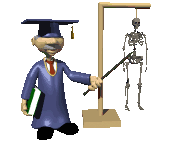
|
Make Readies

The art of foiling is indebted to these various
and odd materials which overcome many problems. They can help, but aren't
a guarantee. If you know any other, please let us know.
BlackRubbercloth : A
black fabric interlaced with minute glass beads to given it a firm but
flexible finish. Very popular on Geitz machines where it smoothes out any
irregularity with the bed.
Blotting paper : As
it says, this is simple blotting paper. When mixed with PVA glue it produces
a malleable paste useful for building counter forces for the female embossing
die.
Blue Print Base(can be grey) : A
soft self adhesive rubber that sticks to the machine bed. Its attraction
is "longevity" and forgiveness as it allows the die to sink into the substrate
and confirm the print. Very popular in the reel to reel label industry.
Car Body Filler : A
less conventional but useful mixture for making "counter forces".
Cork Board : Soft
make-ready, good for short runs, compensates for uneven substrate thickness
and aids achieving a large solid.
Embossing Board : A
yellow dry board that is used to make the counter force by wetting the
board and then allowing the heated die to shape the board under heat and
pressure.
Embossing Cement : Embossing
cement is a powder based compound creating a counter force when mixed with
water
Emery paper : This
is sometimes used to pierce a very hard UV Varnish. A piece is laid across
the die and the sheets are run through without foiling. This is a desperate
measure and requires a double run. However it is generally successful.
Epoxy Glass board : A
hard milky white material, used to create a firm base to assist with keeping
the results clean on soft materials and to stop pvc from becoming distorted
under heat. Available in various thickness'.
Presspahn : Probably
the most popular make-ready material. It consists of compressed board,
and comes in various thickness' (0.3 to 1.5mm)
Pertinax : A
very hard melamine type material. Also used as a cutting base by die cutters.
It is useful for providing a very firm base so that the dies cannot sink
into the material. Thus useful when fine detail is needed.
Plastotherm : A
thin red plastifiable synthetic material for foil embossing, that moulds
under heat & pressure of the die. Available in .15mm & .25mm thickness'.
It can be applied to itself to build up the necessary depth.
PragoHart : A
powder & hardening liquid mix that creates a paste, which hardens in
15 mins,and is used to make a counter force when embossing 200g-500g board.
Pragopaste : A
cream coloured paste, which hardens in about 60 mins under the die temperature,
and is used to create a counter force when embossing. It dries under the
heat of the die and the excess can be cut away.
PragoPlast : A
self adhesive "pad" which is pressed into a shape by the blind embossing
die. Then excess areas are then cut away. Only suitable for blind embossing
on 50g-180g paper. Very fast makeready possible. A Prago film can be applied
over the top to protect it
Pragotherm : A
thin semi-transparent material which is applied to the make-ready and forms
under the heated die to make a counter force. It is limited in the depth
it can achieve, but is easy and quick to use.
Sustamid : This
is a milky white plastic version of presspahn. It lasts longer but is more
expensive. Also, it is only available in one thickness.
SPZ (Acetate) : Used
as an overlay sheet on cylinder machines, this milky white thin plastic
acts as a protection for the make-ready from the rigors of the constant
press of the cylinder.
|

